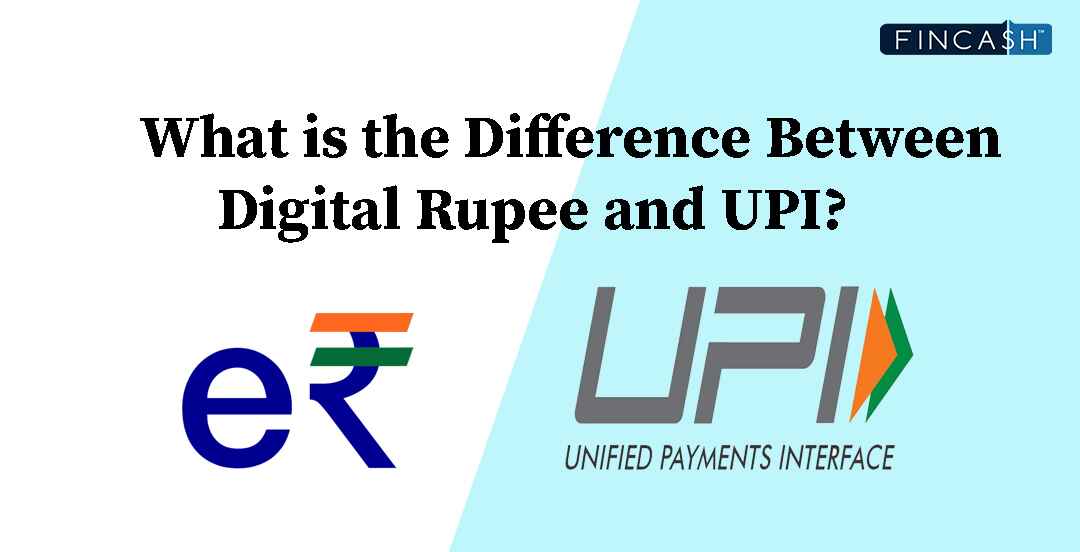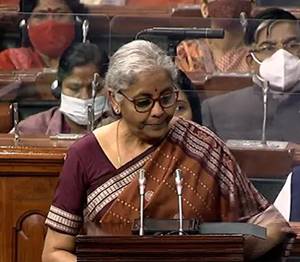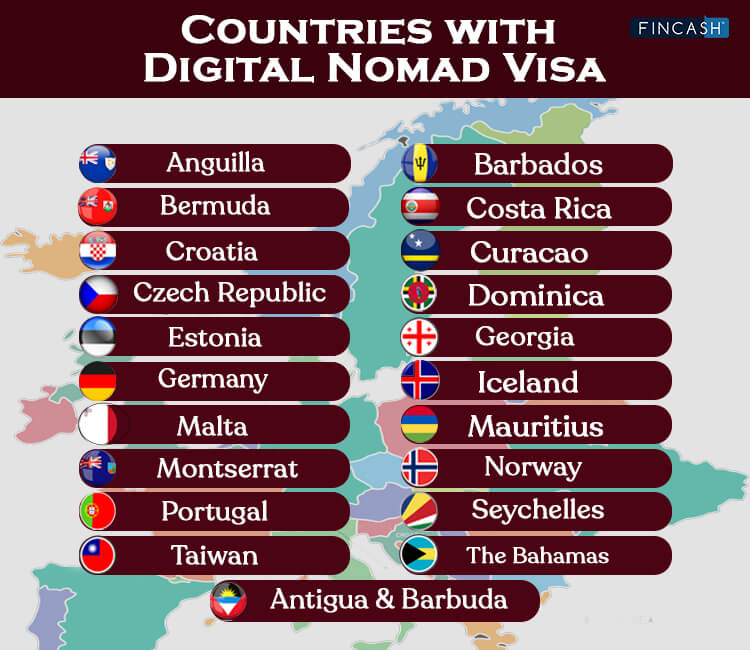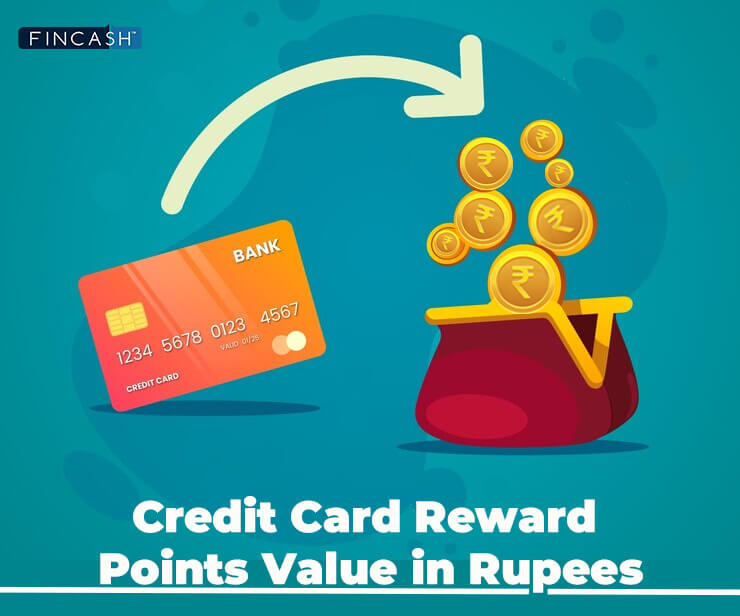What is a Digital Rupee?
During the Union Budget 2022 speech, Ms Nirmala Sitharaman, the finance minister, announced several essential statements about cryptocurrencies, including a new tax on crypto revenues.
While most people were waiting to see if cryptocurrencies would take off, the government appears to have taken a different approach by establishing its digital rupee, which will be accessible later in 2022 and early 2023.
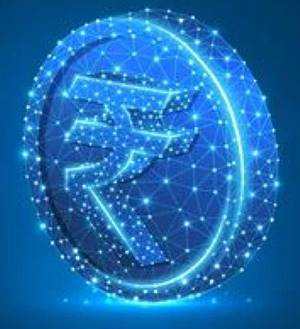
The announcement, dubbed the Central Bank Digital Currency (CBDC), claims that the digital rupee currency will "promote the digital Economy." So, what is a digital currency, how does it work, and how does it differ from other cryptocurrencies such as Bitcoin? To make things easier for you to grasp, everything is covered briefly in this article.
What is a Digital Rupee?
The digital rupee is essentially a digital version of the traditional currency that people use daily. You can keep the money in a secure digital format. It is based on blockchain technology (like a cryptocurrency in rupees), which reduces the cost of currency maintenance and allows the government to manufacture fewer notes in the future.
As the currency is digital, its lifespan is extended because digital versions cannot be destroyed or lost.
What is a CBDC?
The Reserve Bank of India has issued CBDC, or Central Bank Digital Currency, as legal money. A CBDC is a digital token or electronic record of a country's official currency that serves as an exchange medium, account unit, value store, and deferred payment standard. CBDC is a currency type issued by a central bank that differs from paper cash, as per the RBI website. It is the sovereign currency in electronic mode, and it will appear on the central bank's Balance Sheet as a liability. CBDCs can be then exchanged for cash.
Talk to our investment specialist
Working of the Digital Rupee
Even though the digital rupee will be driven by blockchain technology, it will be managed and overseen by a central body, which will avoid currency instability due to various factors.
As the digital rupee is another type of fiat, it is likely to propel digital payments to new heights. 1 cryptocurrency in Indian rupees will be an RBI digital rupee.
Why is CBDC Currently a Hype?
CBDC adoption is warranted for the following reasons:
- Faced with diminishing paper currency usage, central banks attempt to popularise a more appropriate electronic form of currency
- Central banks are attempting to accommodate the public's need for digital currencies, as evidenced by the growing use of private virtual currencies
- These banks are also avoiding the more harmful repercussions of such private currencies
Difference between Digital Rupee Coin and Cryptocurrencies
The digital rupee is different from cryptocurrencies in several ways, as follows:
| Factor of Differentiation | Cryptocurrency | Digital Rupee |
|---|---|---|
| Development and Operation | A cryptocurrency is a blockchain-based, fully decentralised asset and a trade medium. However, it has sparked controversy because of its decentralised nature, meaning that it operates without using any intermediaries like banks, financial organisations, or central governments | In contrast, the digital rupee RBI possesses all of the characteristics of a cryptocurrency. It is built on blockchain technology and aims to eliminate future needs for physical currency. A digital rupee operates in a centralised environment |
| Effect of Government and Government Organizations | It is unaffected by government influence or manipulation. Its worth is also established by free-Market forces and is unrelated to any commodities | When it comes to the digital rupee, the RBI will be in charge, as it will set up its network with some other banking institutions. As a result, the digital rupee's network reach is limited to local bodies and institutions |
| Pricing | Cryptocurrencies' values are not backed by the government or central bank | The digital rupee price will be a digital equivalent of the RBI's physical cash and will thus be backed by the government. It will be equal to possessing a physical rupee counterpart. It works the same way as fiat currency (money issued by the government) and can be traded for existing cash one-for-one |
| Legalisation | Cryptocurrencies will not be regarded as Legal Tender in India anytime soon | The RBI digital currency may become legal cash |
The Need for a Digital Rupee
One of the key reasons for the RBI's decision to introduce a digital rupee is that India doesn’t want to stay behind in the virtual currency race. The virtual currency will be here to stay, according to the government.
Whether you like it or not, it cannot be ignored. Instead of denying that virtual currency exists, the government has chosen to construct its own. Unlike the normal rupee, you won't need to have a bank account to transfer the digital rupee.
You will be able to send it immediately to the other person's digital rupee wallet because it will be based on blockchain.
Digital Rupee vs Regular Rupee
The digital rupee would be counted as a form of currency. It will assist the government in printing fewer physical cash notes and reducing counterfeiting. It will aid in the development of a more efficient and cost-effective currency management system.
For internet transactions, unlike the standard rupee, the digital rupee will not require the use of a bank middleman. The transaction can be completed via blockchain by both the sender and the recipient, with the RBI acting as a guarantee.
Drawbacks of Digital Rupee
There will always be a money trail if you utilise a digital rupee. The government will get to track where and how you spent the money due to this. There will also be privacy concerns since the financial transactions of people involved can be disclosed and exploited. Furthermore, banks may have less money to lend because the digital currency would be issued directly by the RBI to the end-user.
Conclusion
The digital rupee can be used in various ways in the real world, including programmable payments for subsidies and speedier lending and payments by financial institutions. Shortly, there might be a pragmatic shift to a cashless economy that would bolster the government's push for cashless payments and positively impact the banking sector.
As the use of the digital rupee grows, it can improve things like cross-border remittances. An environment for interoperability can be built, allowing for faster real-time transmission.
All efforts have been made to ensure the information provided here is accurate. However, no guarantees are made regarding correctness of data. Please verify with scheme information document before making any investment.
